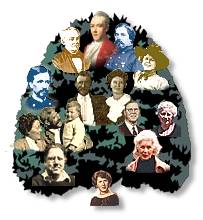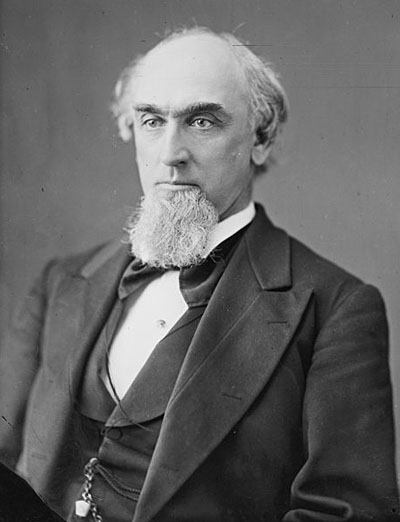|


The Lawrence Branch
UPDATED 11 May 2016 |
|
| |
Biographies, p. 52 William Lawrence, jurist and Ohio congressman, the son of Joseph and Temperance (Gilchrist) Lawrence,
was born in Mt Pleasant, Ohio. He received his early educational training in the village schools
and in Tidball's Academy, near Steubenville. In 1838 he graduated with high honors from Franklin
College at New Athens and, that autumn, entered the law office of James L. Gage of Morgan County. While
pursuing his legal studies he taught school in Pennsville and at MacConnelsville, Ohio. In 1839 he
entered the Cincinnati law school and the following March received his degree. In 1840 he began the practice of law, first in Zanesville, then in MacConnelsville and, the next year,
settled in Bellefontaine. In 1842 he was appointed by the United States district court to be commissioner of
bankruptcy for Logan County.
William Lawrence, jurist and Ohio congressman, the son of Joseph and Temperance (Gilchrist) Lawrence,
was born in Mt Pleasant, Ohio. He received his early educational training in the village schools
and in Tidball's Academy, near Steubenville. In 1838 he graduated with high honors from Franklin
College at New Athens and, that autumn, entered the law office of James L. Gage of Morgan County. While
pursuing his legal studies he taught school in Pennsville and at MacConnelsville, Ohio. In 1839 he
entered the Cincinnati law school and the following March received his degree. In 1840 he began the practice of law, first in Zanesville, then in MacConnelsville and, the next year,
settled in Bellefontaine. In 1842 he was appointed by the United States district court to be commissioner of
bankruptcy for Logan County.
On December 20, 1843, he married Cornelia, the daughter of William Hawkins of MacConnelsville, who died three months after their marriage, and on March 20, 1845, he married Caroline, the daughter of Henry Miller of Bellefontaine. In 1845 he became prosecuting attorney of Logan County and, from 1845 to 1847, was the editor of the Logan Gazette. He was a member of the Ohio House of Representatives in 1846 and 1847 and of the state Senate in 1849, 1850, and 1854. In 1859 he became editor of the Western Law Montly and served three years. From February 1857 to September 1864 he was judge of the common-pleas court and district court. During the Civil War he was colonel, for three months, of the 84th Ohio Volunteers, serving in Maryland, and, in 1863, Lincoln appointed him district judge of Florida, but he declined to accept. From 1865 to 1877, excluding one term, he was a member of Congress. He was the virtual author of the law that created the Department of Justice. He also drafted the measure that gave each soldier one hundred and sixty acres of the alternate reserved sections in the railroad land grants.
From 1880 to 1885 Lawrence held the office of first comptroller of the United States Treasury Department
and was the first of the controllers to print his decisions. His legal acumen won for him universal recognition.
He often appeared before the United State Supreme Court in important land cases. His firm grasp of
the fundamentals of the law, his keen analysis of the salient points at issue, his quick
perception of the weakness in his opponents' arguments, and his frankness made him respected and
feared.
|









 Copyright © 1997, Mary S. Van Deusen
Copyright © 1997, Mary S. Van Deusen